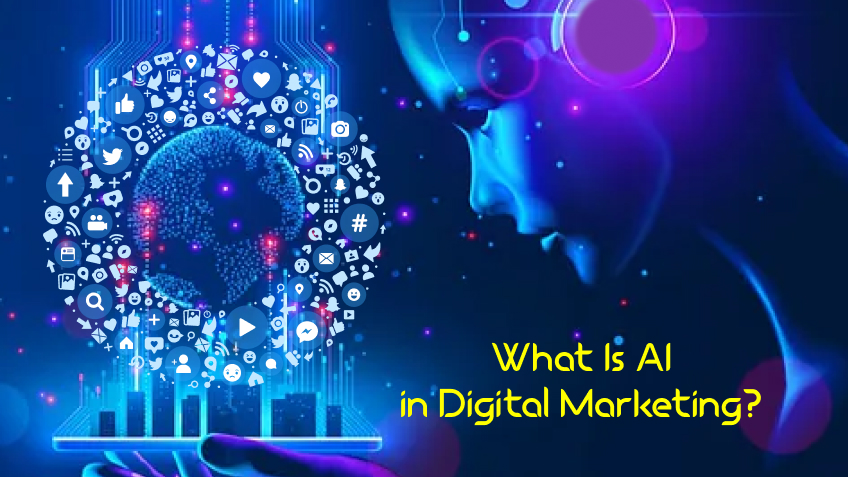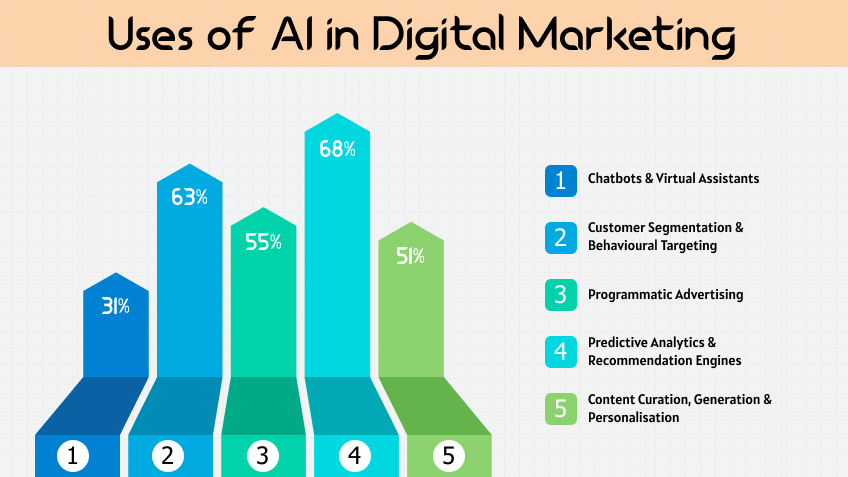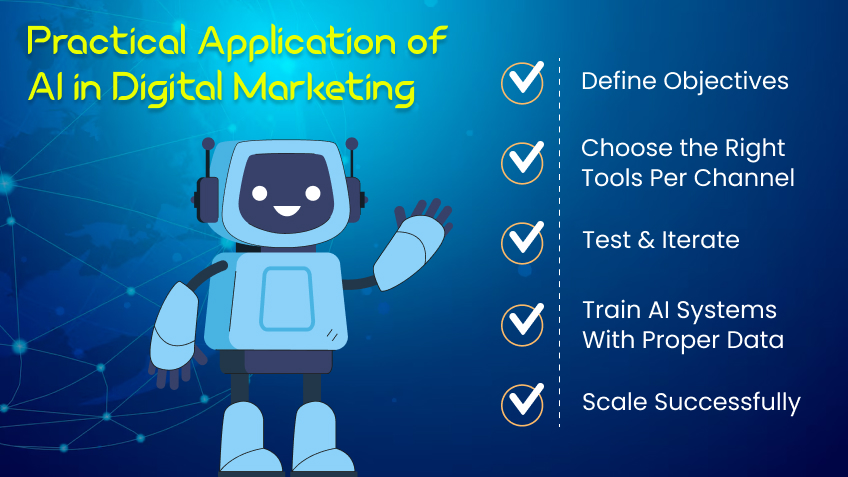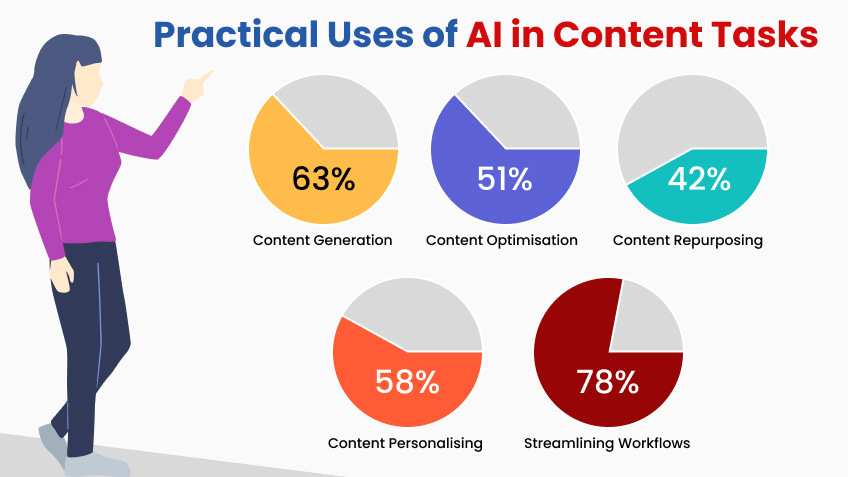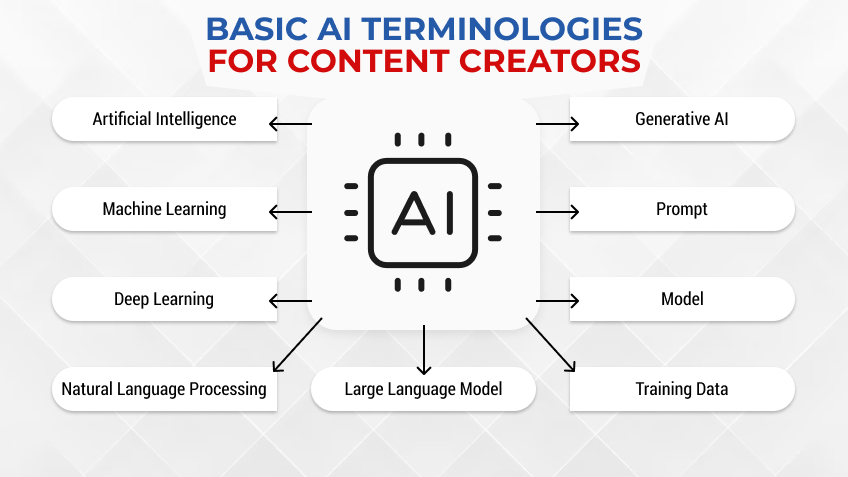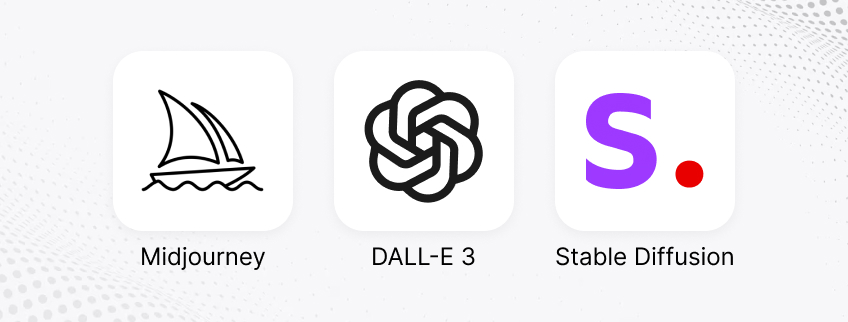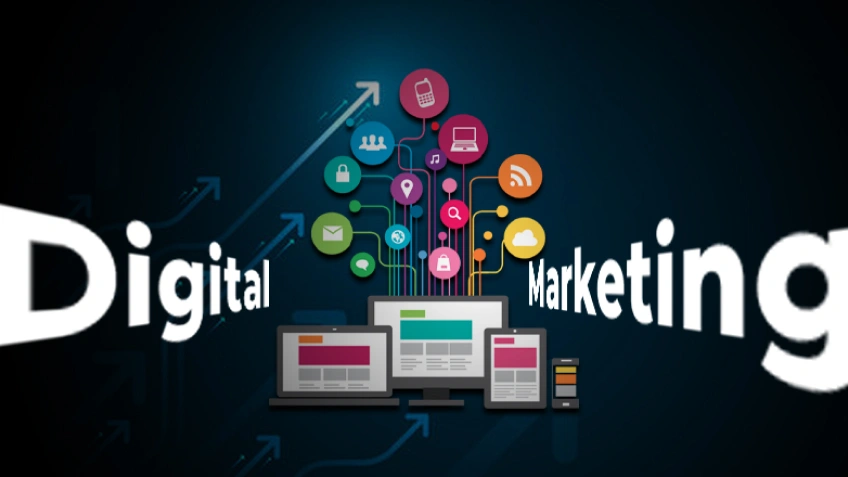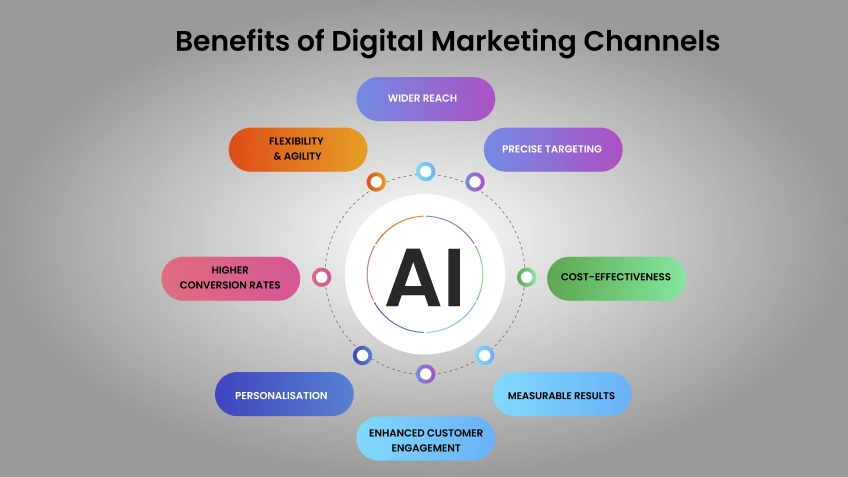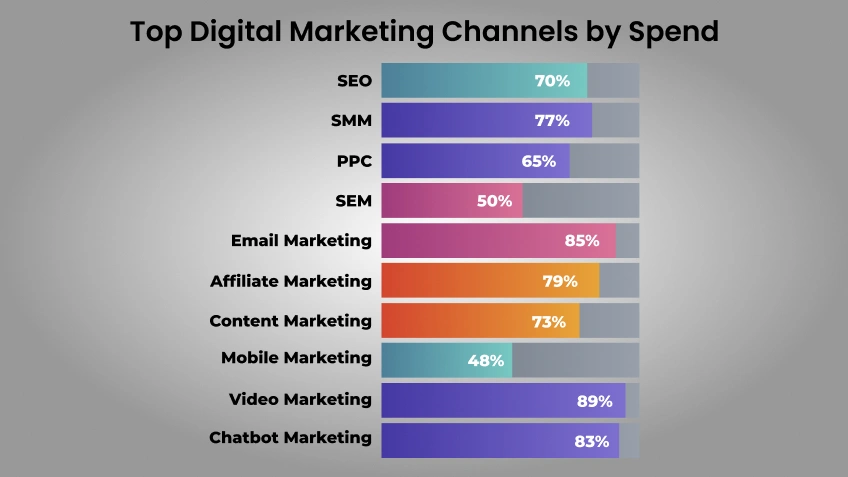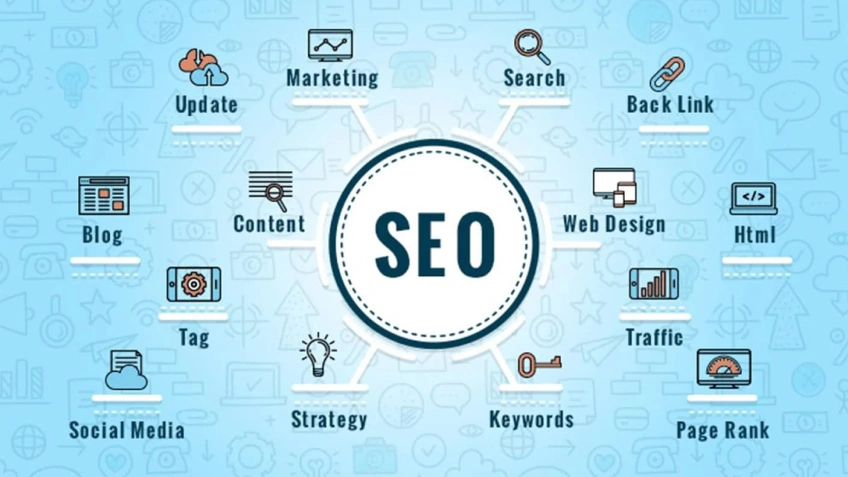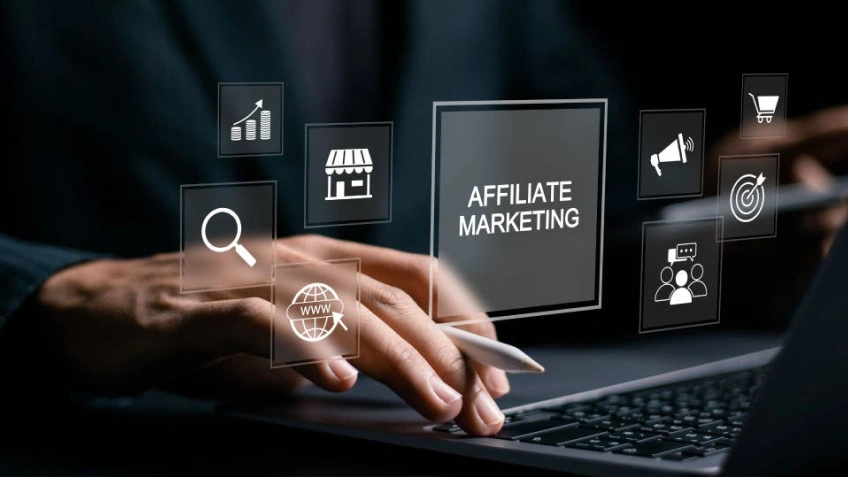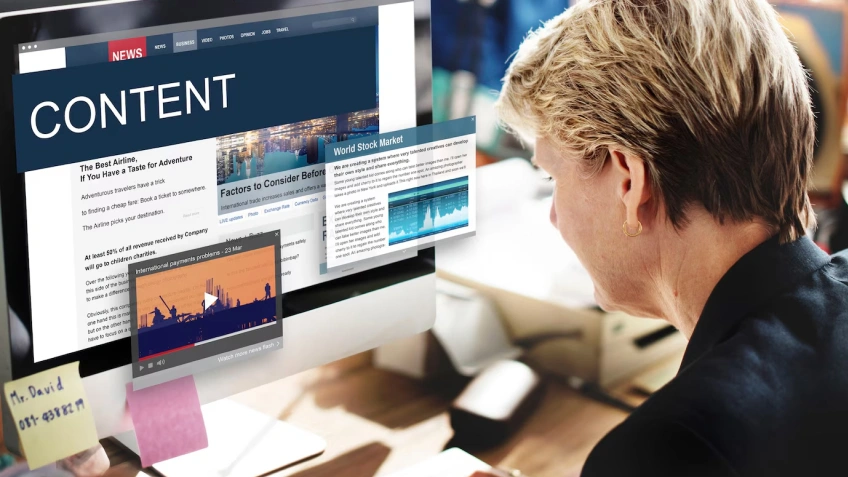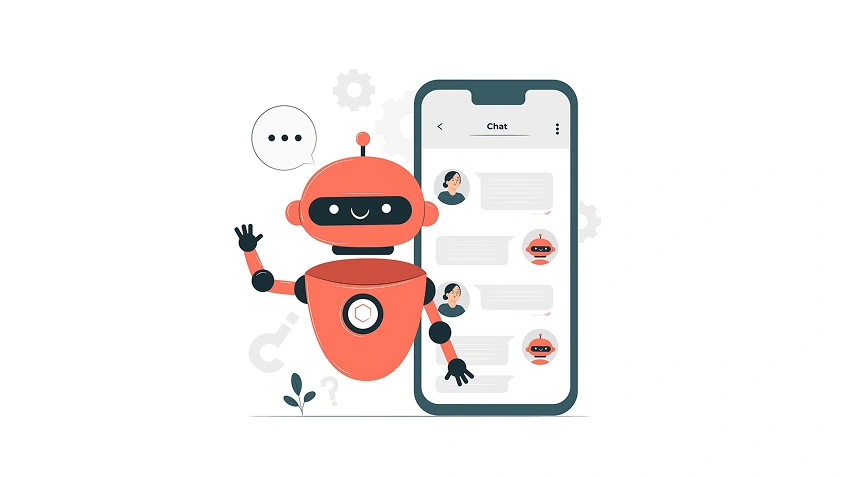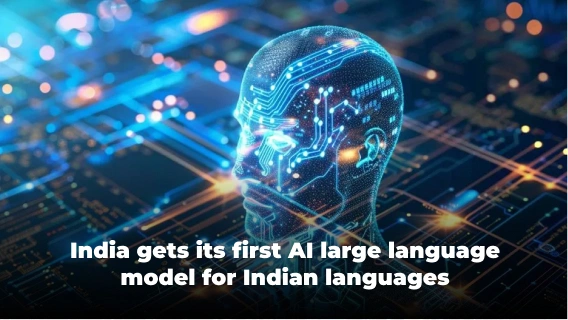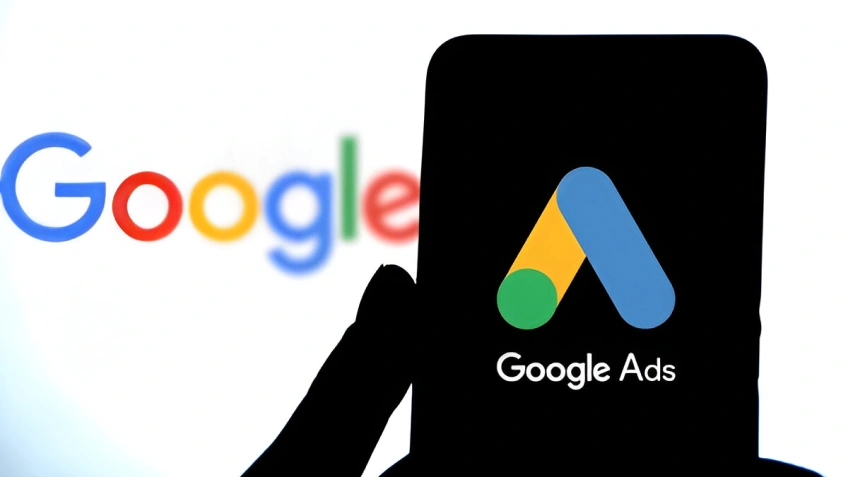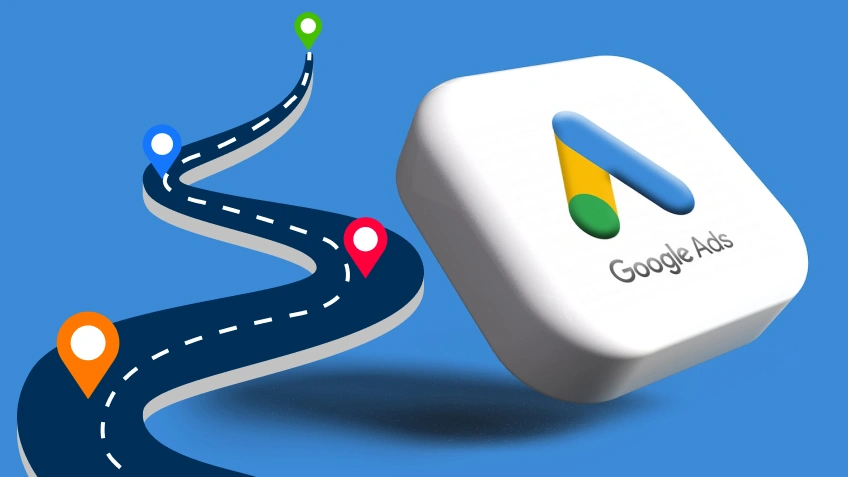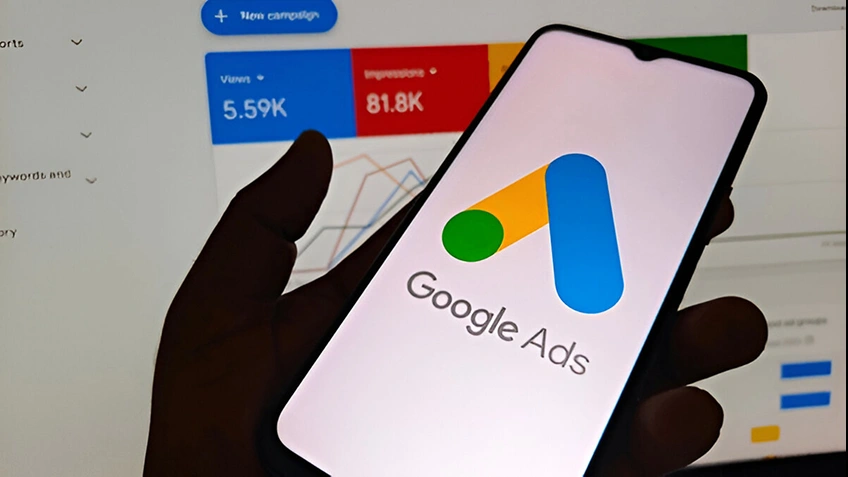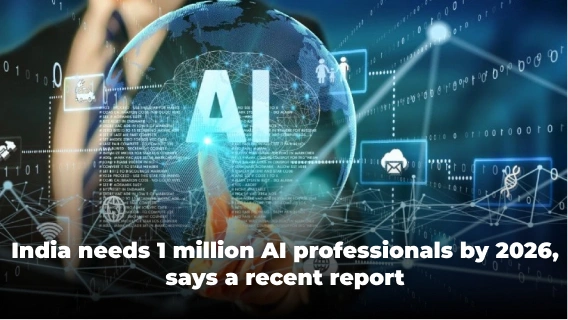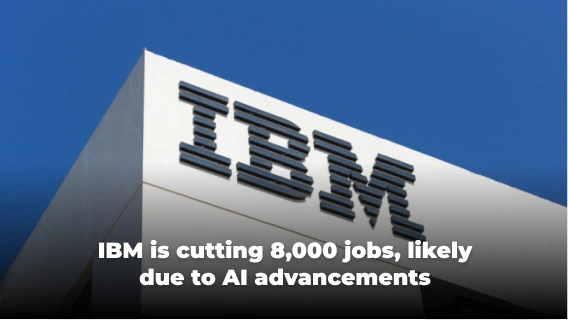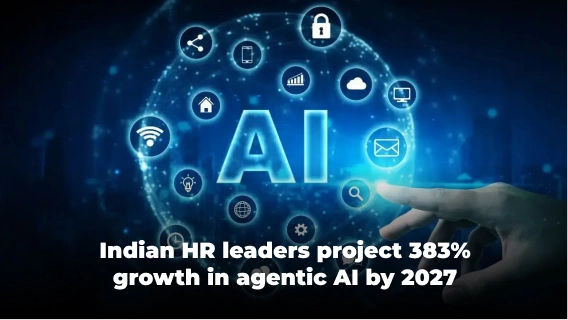The AI in digital marketing revolution is already here! This cutting-edge technology is reshaping how businesses connect with their customers. If someone is still not leveraging the power of artificial intelligence, they are not just missing out big but also falling behind many of their competitors. This guide will equip you with essential knowledge and next-gen strategies to integrate AI in digital marketing efforts and lead a brand to unmatched success!
Currently, 56% of marketers confirm their companies are taking an active role in deploying and utilising AI. Additionally, a significant 32% of marketing organisations have now achieved full AI implementation.
Today, AI has become a game-changer for marketers, helping them offer a personalised experience to customers, powerful predictive analytics, and much more.
However, many still believe AI will displace human marketers, but it is not so.
AI will not replace humans, but those who use AI will replace those who don’t.” – Ginni Rometty, Former CEO of IBM
This powerful statement highlights the importance as well as the necessity of implementing AI into marketing strategies in today’s data-driven world.
AI-driven marketing strategies offer immense opportunities to create content that triggers expected actions.
In this blog post, we explore what AI means in digital marketing, covering its crucial role, essential AI technologies and tools, real-world applications of AI, challenges, benefits, and key best practices for implementation.
Let’s get started!
What Is AI in Digital Marketing?
AI in digital marketing refers to applying different artificial intelligence technologies to improve, automate, and personalise various aspects of marketing.
AI leverages ML (machine learning), NLP (natural language processing), big data, and predictive analytics to improve and transform how different brands and businesses interact with their customers and optimise marketing campaigns.
The question is, will AI replace human marketers? Before answering that, let’s take a quick look at this notable quote.
“The future of AI is not about replacing humans, it’s about augmenting human capabilities.”- Sundar Pichai, CEO of Google
This means if you are thinking of a career in digital marketing, you can enrol in our digital marketing with AI course without a second thought.
The role of AI in digital marketing is to optimise campaigns through granular personalisation, automation, and predictive insights, driving improved engagement and ROI (return on investment).
This field is brimming with numerous opportunities; you just need to take the right step. Learning applications of AI in digital marketing is among the skills that are in high demand.
How to Use AI in Digital Marketing?
Digital marketing skills, when coupled with AI, empower marketers with tools and techniques to work more efficiently and smarter, and deliver better results. The following are the key marketing areas where AI makes a difference.
Customer Segmentation & Behavioural Targeting
AI enables marketers to perform dynamic and highly specific customer segmentation. By analysing vast datasets (browsing history, purchase behaviour, demographics, psychographics) and interactions across numerous touchpoints, marketers can create highly relevant campaigns.
Case Study & ROI Impact:
A retail company, ‘StyleSense’, leveraged artificial intelligence in segmenting its customer base into micro-segments based on users’ online activity and purchase history. By understanding consumer behaviour, it offered tailored promotional offers and product recommendations. Through an AI-driven marketing strategy, this company experienced a 30% boost in conversion rate and a significant reduction in customer acquisition cost.
Chatbots & Virtual Assistants
AI-powered chatbots and virtual assistants help businesses by providing 24/7 instant customer support, personalised guidance, and even lead qualification. These AI-powered tools leverage machine learning, natural language processing, and integration to manage routine enquiries. This frees up human resources for handling more complex issues and gathering valuable data for further analysis.
Case Study & ROI Impact:
A telecom company, ConnecMe, integrated AI chatbots on its website to manage customer queries about data plans, billing, and technical support. AI chatbots resolved 60% of customer queries without human intervention. This allows human agents to focus on complex issues while improving overall customer satisfaction and experience.
Predictive Analytics & Recommendation Engines
AI uses historical data to predict what customers will do in the future, what they might want to buy, or which type of content they like more. Recommendation engines leverage these predictions to suggest relevant content or products to each person.
Case Study & ROI Impact:
An online grocery store, ‘FreshBasket’, used AI to predict what groceries customer will require in the coming week based on their past purchases. Their AI-powered ‘quick add’ feature led people to add 10% more items to their shopping cart. This led to a remarkable increase in repeat purchases due to shoppers’ convenience.
Content Curation, Generation & Personalisation
Generative AI helps in creating and delivering the right content to the relevant customers. This cutting-edge tool helps marketers identify popular topics, write concise email copies or ads, and even create compelling website content. Learning AI for content creation can open the door to numerous possibilities.
Case Study & ROI Impact:
A travel booking site, Wanderlust Travels, integrated AI to create personalised travel itineraries and promotional emails for users. If a user searched for beach destinations specifically, the AI helped in generating emails showcasing top beach resorts and activities. This helped the company increase 10% of bookings.
Automated Bidding & Programmatic Advertising
Now, AI has become an essential tool to run smart online advertising campaigns. This advanced tool helps marketers to automatically adjust bids for ads and suggest the right place to add them. It ensures the right people see their ads at the right moment, getting the most out of the money spent.
Case Study & ROI Impact:
A SaaS company, ‘GrowthFlow’, used AI-powered programmatic advertising to reach businesses that are more likely to subscribe to their software. AI constantly helped this company in optimising ad placements and bids across various platforms. This helps GrowthFlow increase 35% qualified leads for the sales team.
Key AI Tools and Technologies for Digital Marketing
The following table illustrates key AI tools and technologies used in digital marketing.
| AI Tools Category | AI Tool Name | Starting Price (per month) | Used for? |
| Content Creation | ChatGPT | ₹1,950 | Primarily used for content generation. These tools can quickly create various content forms like articles, social media posts, and ad copy, helping marketers save time. |
| Jasper | ₹5051.17 | ||
| Copy.ai | Custom Pricing | ||
| SEO & Analytics | Surfer SEO | ₹6763.43 | Primarily used for SEO and content optimisation. Use AI to analyse what’s already ranking, suggest keywords, and topics, and how to structure your content for better performance. |
| SEMrush AI tools | ₹8475.69 | ||
| Frase | ₹3852.59 | ||
| Email & Ad/Bid Optimisation | Mailchimp AI | ₹1112.97 | Primarily, optimises your email and advertising efforts. Use AI to personalise emails, automate ad targeting, and even create effective ad designs to help users get better results. |
| Adobe Sensei | Available on Request | ||
| AdCreative.ai | ₹3338.91 | ||
| Visual AI | MidJourney | ₹856.13 | Primarily create images from text descriptions. Used for creating diverse visual content and even for image and video editing. |
| DALL·E | ₹1712.26 | ||
| Canva | ₹499 | ||
| Automation | Zapier | ₹8,277 | Primarily used for business automation and customer management. HubSpot is a CRM for marketing, sales, and service. Manychat builds chatbots for messaging platforms. Zapier connects various apps, automating workflows between them code-free. |
| Manychat | ₹1284.20 | ||
| HubSpot | ₹1712.26 |
Digital Marketing With AI: Practical Implementation
Implementing AI in digital marketing involves a structured approach to churn out effective and measurable results. Here is the step-by-step to implement AI in marketing efforts.
Define Objectives
Before beginning with AI integration, you need to clearly define your objectives or what you want to achieve. Whether it is increasing your CTR (click-through rate), reducing CAC (customer acquisition cost), increasing conversion rate, boosting sales, or improving customer retention: you need to set clear goals.
Choose the Right Tools Per Channel
Just as digital marketing is a vast landscape, the variety of available AI tools is extensive too. Pick the right AI solution that offers features aligned with the digital marketing channels you operate on. For example, social media, search ads, email, or content creation.
For instance, an AI tool which is designed specially for social media will not be suitable for optimising Google Ads bids.
Train AI Systems With Proper Data
The effectiveness of any AI system depends entirely on the relevance and quality of the data it is fed/trained on. Give clean, accurate, and comprehensive historical data to your AI system, like customer demographics, past campaign performance, and conversion data.
The more meaningful and robust the training data is, the more accurate and intelligent the AI’s recommendations and marketing automation will be.
Test & Iterate
Just like any other aspect of digital marketing, AI isn’t a ‘set it once and forget it’ solution. It is a continuous process of improvement and refinement. You need to test your AI-driven strategies continuously using A/B testing to compare the performance against other AI variations or traditional methods.
Track KPIs (key performance indicators) rigorously to find what is working and what is not and make improvements accordingly. This approach ensures continuous optimisation.
Scale Successfully
Once the initial A/B testing provides positive results and your AI model yields consistent performance, the next step is to scale. Plan for scalable integration across various channels, campaigns, or audience segments.
Make sure your existing infrastructure supports growing data processing and AI operations. Additionally, ensure your team is equipped with the right tools and abilities to manage the extended use of artificial intelligence without hurdles.
AI in Digital Marketing: Weighing Benefits and Challenges
AI is revolutionising the digital marketing landscape. This cutting-edge technology offers unmatched opportunities for personalisation, efficiency, and data-driven decision-making. However, AI adoption also comes with significant challenges.
In this section, we will thoroughly discuss the benefits and the challenges of AI in digital marketing.
Benefits of AI in Digital Marketing
Efficiency
AI is adept at automating time-consuming and repetitive tasks like email scheduling, ad bidding, content generation, and data analysis. This allows marketers to focus more on creative and strategic tasks.
Data-driven Accuracy
AI’s analytical capabilities enable marketers to gain in-depth insights into a marketing campaign’s performance, market trends, and consumer behaviour in real-time. This accuracy allows marketers to make more informed decisions, optimise spending, and achieve better ROI.
Improved Customer Experience
As discussed in previous sections, AI chatbots and virtual assistants allow businesses to provide 24/7 customer support, answer queries and offer personalised help. This improves overall customer satisfaction and loyalty.
Optimised Campaigns
AI tools help you refine ad targeting, analyse email engagement, and optimise bidding strategies for PPC (pay-per-click) campaigns. This significantly improves open and click-through rates. Additionally, AI can assist you with keyword research and content optimisation.
Challenges of AI in Digital Marketing
Data Privacy and Legal Issues
AI systems heavily depend on customer data, which raises significant concerns about data collection, storage, and usage. To avoid legal penalties and maintain trust, adherence to regulations like GDPR (General Data Protection Regulation) is crucial.
Algorithm Biases
As AI is trained on historical data, information containing societal biases can be more amplified by these tools. This amplification can lead to discriminatory results in content recommendations, ad targeting, pricing and misrepresentation of certain demographics.
Integration Challenges
Implementing AI tools with the existing marketing system and workflows is not only time-consuming but also highly complex. Integration of AI tools in legacy systems requires significant changes to business processes.
Cost
Building, integrating, and maintaining AI technologies requires substantial investment in software, hardware, and skilled personnel. The cost factor can be a significant hurdle for many small to medium-sized businesses.
Lack of Creativity and Human Touch
Although AI is capable of generating compelling content, it lacks creativity, empathy, and the ability to understand human emotions. Avoid relying overly on AI-generated content as it lacks a human touch and produces a generic piece of information.
Lack of Expertise
As AI is a rapidly evolving technology, several marketing personnel might lack the necessary skills and understanding to integrate and manage this technology effectively.
Best Practices to Use AI in Digital Marketing
While challenges in AI integration persist, by following best practices, you can overcome these barriers and use this technology to its full potential.
Start with Clear Goals and a Structured Approach
Before integrating AI into your marketing efforts, define what problems you want to solve and what outcomes you are expecting through this implementation. For example, increase conversion rate by __%, minimise repetitive tasks by __%, and so on.
Start with small projects to see the effectiveness of AI integration in specific areas before going for full-scale implementation.
Prioritise Data Quality and Governance
The fundamental of effective AI in digital marketing is high-quality data. This means you need to establish clear internal policies for data collection, storage, and usage.
Additionally, you should actively invest in data cleansing, regular audits, and standardisation to make sure the data is consistent, accurate, and representative.
Ensure Human Oversight and Collaboration
AI is not replacing human marketers, but this innovative tool should be seen as an amplifying tool.
Maintaining effective human oversight and collaboration with these tools is critical, especially for tasks involving creativity, strategic decision-making, and reviewing AI-generated content. Marketing teams should upskill and understand the capabilities and ethical considerations of AI.
Actively Mitigate Bias
Mitigating AI’s algorithmic bias is an essential ethical responsibility of any marketer. This includes training AI models on representative and diverse datasets to avoid biases from continuing.
To identify and rectify unfair or discriminatory outcomes, regular audits of AI results, the usage of fairness metrics, and including people with different viewpoints in developing AI are essential.
Embrace Transparency
Maintaining transparency is the key to developing and maintaining consumer trust in AI-driven marketing. This includes being transparent about when and how AI is being used. Whether it is for content generation or personalisation, you need to be open about AI usage with your audience.
Stay Updated on Regulations and Ethical Guidelines
Data privacy and AI are a constantly evolving landscape. Therefore, marketers need to stay updated and adapt their AI practices according to new data protection laws like the CCPA (Central Consumer Protection Authority) and GDPR.
Consider developing an internal ethical AI usage framework and engaging with industry bodies to ensure your marketing strategies remain legally compliant.
Conclusion and Action Plan
AI is now a thriving reality which is impacting various industries, including digital marketing. It has completely revolutionised how brands engage with their customers, offer support, create content, and have reshaped many aspects of marketing.
While challenges in AI integration need careful navigation, embracing best practices will help you overcome potential barriers and use this tech to its full potential.
Given the boom of AI in digital marketing, building a career in this domain is a smart move.
If you want to learn more about AI in digital marketing and seek a career in this field, you can enrol in our AI in digital marketing course in Kolkata.
Let’s connect and discuss how we can help you thrive in digital marketing with AI!
FAQs
Can AI help with email marketing automation?
Yes, AI significantly improves email marketing by automating personalisation, generating content, segmenting the audience, and optimising send times. This leads to higher engagement and ROI. AI greatly streamlines workflows and frees up time to focus on strategic areas.
How is AI transforming SEO practices?
AI is transforming SEO by enabling an in-depth understanding of user intent, automated content optimisation, advanced keyword research, and real-time adaptation to search engine algorithm changes.
What are the challenges or risks of using AI in marketing?
The primary concerns of AI in digital marketing include data privacy, potential AI algorithms‘ bias, generating false information, maintaining the quality of data, etc.
How accurate is AI in predicting consumer behaviour?
AI can be very accurate in predicting consumer behaviour. It analyses diverse datasets and finds patterns that humans can miss. AI techniques like predictive analytics, machine learning, and transformer models enable precise prediction of customer purchase intent.
What are the privacy concerns while using AI in marketing?
As AI relies on a large volume of personal data for analysis and personalisation, privacy is a rising concern. Marketers must ensure adherence to regulations like GDPR and CCPA, maintain transparency about data usage, and keep up data security to avoid legal and ethical issues.
Does Google penalise AI-generated content?
Not necessarily, but Google prioritises reliable, helpful, and quality content regardless of how it is produced. Google mainly focuses on EEAT (experience, expertise, authority, and trustworthiness), not the tools used for content creation.
Read more blogs:

